|
Radschool Association Magazine - Vol 33 Page 16 |
|
Privacy Policy | Editorial Policy | Join the Association | List of Members | Contact us | Index | Links | Print this page |
|
|
|
Looking through the past issues of the “Radschool Magazine, I happened to see a photograph in Vol. 21, page 8 titled “6 Tels Ops Course”. Cpl. Ron Ridley was in that photo. I knew Ron Ridley as he was my “boss” at Ballarat and we both worked together in “Signals” as it was called in those days. |
|
|
|
|
|
|
|
Back row L-R: Bill Lea, Graham Beckman, Bob Reece, George Kleinig: Front row L-R: Graham Price, Ron Ridley.
|
|
In the last 18 months of my posting there, we two used to alternate a week on and a week off between the Comms Centre and the PBX room (Base Telephone Exchange) which was attached to the guard room just inside one of the entrances to the base.
Ron and I had a good working relationship and we got along quite well. We had a Signals Officer for a boss who was much younger than the both of us (I was 23 at that time). Ron had one passion and that was cricket and at every opportunity he played cricket, whether it was cricket on the base or district cricket in Ballarat somewhere.
Radschool used to set aside Wednesday afternoons for sport and this suited Ron fine except, being the only two in Comms, one of us had to be on duty at the PBX. The Comms. Centre Teleprinters could run by themselves unless there was a urgent signal to be sent. I was not very sports minded, so Ron and I struck a deal. If I let him have my Wednesday afternoon for sport I was could take off for Melbourne every second Friday afternoon for a good weekend in my “FJ Holden”. The other benefit of this arrangement was, if I was stuck in Melbourne or anywhere else on the following Monday morning Ron would cover for me until I got back to base. This happened on a few occasions and we got away with it. Yes he was a great friend and work colleague.
The other two characters I wish to write about are Wing Commander Bill (Squizzy) Taylor the CO. when I was there and a brilliant Radar Instructor named Cpl. Johnny Jarman.
Wing Commander Taylor was really a colourful person. He was only about 5’ 8” or 5’ 9” tall and a little rotund. He was an ex WWII WOP (Wireless Operator) or WAG (Wireless Air Gunner) and had the ribbons to prove it. Parts of the parade ground at Ballarat consisted of small river pebbles (if my memory serves me correctly) and it was funny to watch him on the Tuesday morning parades. After addressing the parade, he would do an about turn to salute the flag and because of his stature and the loose pebbles on the parade ground he would almost fall over. This happened on many occasions and caused much suppressed laughter in the ranks.
|
|
A rat can last longer without water than a camel.
|
|
Twice he gave me 7 days CB for not making my bed properly for the Tuesday morning inspection and my pre-discharge interview with him was a riot. This was December 1959. The Orderly Room WO called and asked me to present myself to the CO. So off I was marched to the CO’s office. When I entered his office, the Signals Officer, the SAO, the STO and the aforementioned W/O were all present and so the interrogation began.
CO: “I hear you do not wish to re-enlist. Me: “That’s right Sir” CO: “Why” Me: “I feel I need a change sir” CO: with a roar “YOU NEED A CHANGE?, YOU NEED A CHANGE?” CO: in a much quieter voice, “Hasn’t the RAAF been good to you, It is also a cruel world in civvy street” Me: “It has sir, but I must try and establish my future in the so called civvy street” CO: “Have you applied for any positions outside RAAF yet?” Me: “No sir but, I am going to work for NCR”
By this time his face was becoming redder by the moment and the officers present were looking out of the window over the parade ground with smiles on their faces.
CO: “I don’t believe you, no one can anticipate employment without approaching a company first”. ME : There again sir I could change my mind a couple of hours before discharge and stay in” CO: With another roar, “Well I am not changing my mind” and with that, he signed my pre-discharge papers and once again with a roar he said “Get him out of here”.
He also had another nasty streak in him. He had earlier been in the U.S.A. on attachment and bought back this monstrous “Yank Tank”. I think it was a “DE-SOTO”, which was a left hand drive, two tone “Cream & Pink” with the big fins at the rear. The entrance road from the Sunrasyia Highway to the main gate had a gentle down grade and he had the habit at night of coasting down the slope in neutral and with no headlights. Pity help the guard on duty if he wasn’t out there to greet and salute him as he came through. I know, he caught me one night. It was a bitterly cold night with the pot-bellied stove glowing red, the windows fogged up and me reading a book. All of a sudden he bounds through the door and says “Ah! Sleeping on guard duty, this is serious. If it was wartime I would have you shot”. The next morning I was standing before him on this charge and copped 14 days CB for it.
|
|
A piece of 2 by 4 timber actually measures 1½ by 3½
|
|
I did find employment with NCR in Sydney in 1960 and worked for them for nine years in three countries as well as an IBM affiliate for almost ten years. When I returned to Australia in 1979, I was an Area Service Manager for a computer company in Melbourne. The company did a lot of work for the Defence Department and I was once invited to a lunch at the RAAF Officers’ Club in Dorcas Street Sth. Melbourne. Whilst having a drink and a chat with various people present, I happened to glance across the room and who do I see, none other than Wing Commander Taylor in civvies. I approached him, he looked at me, and I looked at him and said “Do you remember me?” Without hesitation he replied “Ah! The problem boy from Ballarat”. That broke the ice and we had a good long chat about old times.
Cpl. Johnny Jarman – what can I say. He was the most odd ball character I ever came across in the six years I was in the RAAF and he and the CO (Taylor) never got on despite the difference in rank. John was a very clever instructor, especially in Radar theory and practice and the CO hated anyone being smarter than him. At every opportunity the CO would find fault with John.
John was a likeable character, but had a lot of strange habits. Each hut at Ballarat was divided into four rooms with four people to a room and John had a room to himself, because he had a weak bladder and used to wet the bed and that made the room smell, thus no one would share a room with him. He also used to wander around the base talking to himself and waving his arms around in the air, (I have often heard that very clever people do strange things and don’t realise it). He had an old green “Austin A30” sedan which he used to get around in and because of his bladder condition he fitted a funnel with a length of hose that terminated under the radiator. When John wanted to relieve himself, it appeared that his radiator was leaking.
On one of the CO’s snooping expeditions he entered John’s room and found his ‘303’ rifle not locked in its bedside rack, so he nicked it. The next morning (Tuesday Parade) John came on parade with a yard broom at the slope and guess what? The CO purposely picked on his flight for inspection. With everyone holding their rifles at the port position, he went down the rows. When he came to John, he grabbed the end of the broomstick, put his eye to it and said, “When was the last time you cleaned this rifle son?”. John, “It’s not a rifle sir”. The CO in mock amazement said “What is it then?”, John, “It’s a bloody broom sir, some bastard stole my rifle last night”. CO, “Then I want to see you after parade”. I never found out what happened about it.
|
|
A steel 44 gal (205 Litre) drum measures 24 inches (61 cms) in diameter and is 34.5 inches (87.5 cms) high.
|
|
The last I heard of John Jarman was he ended up working for a TV station in Willoughby in Nth Sydney. (If anyone knows where he is today, please let us know – tb)
Do any of the former students or staff remember when the picture theatre burnt down?. It was located to the west and beside the gymnasium. I think it was sometime in 1958. We were all standing outside waiting to get in when we saw smoke coming from one end of the building. The Ballarat Fire Brigade was on the scene in about half an hour, but by that time the building was completely gutted. According to the projectionist and the Fire Brigade assessment, it started with the stage curtains being too close to the flood lights at the edge of the stage. It left a lot of disappointed people as they had to go into Ballarat to see a movie from then on. The building was never replaced as RAAF Ballarat was to be abandoned in a few years’ time.
Two other chaps that I can remember were Fred Dykstra who was a good friend of mine, originally from Perth and was posted to Amberley after his course. The other was a Grant Thompson, from Brisbane and off the same course as Fred who was also posted to Amberley. Does anyone know of their where-abouts now?
So ends my memories of RAAF Ballarat. I am sure all those who were there during those years will remember these happenings and perhaps many more for which I can’t recall and I can only assume that some would wish they could relive it, I know I would.
|
|
The number of possible ways of playing the first four moves per side in a game of chess is 318,979,564,000.
|
|
Vietnam – all over again.
An article in the Law Society Journal (attached) supports the longstanding complaint about the ‘offsetting’ of compensation payments to wounded ADF personnel returning from Afghanistan (and other theatres).
The article says in part:
“……..if a veteran sustains a shrapnel wound to their leg that results in a permanent impairment assessed at 10 impairment points and the veteran had suffered an impairment from, say a previous arm injury covered under the VEA and/or the SRCA, they may receive no (or only a small) periodic payment or lump sum benefit under MRA.
“….....under the current offsetting regime they may even be assessed as having a negative quantum entitlement…”
This ridiculous situation must, of course, be quickly remedied.
It seems the Canberra bean counters are at again, only this time they are after the younger generation of Diggers returning from The Middle East. It all sounds so familiar, the pollies love doing photo shoots with the Diggers but don’t want to know them if/when they get injured.
|
|
Celery has negative calories. It takes more calories to eat a piece of celery than the celery has in it to begin with. See HERE
|
|
Funny Names.
When it comes to naming boats, some people confirm they have a huge amount of funny.
See HERE
|
|
What happened to, and who was Kilroy??
Most of us will remember
Kilroy, he was probably the first graffitied figure, he appeared
everywhere, on walls, bridges, fences, anywhere where there was a
flat surface, telling one and all, that he was here - but, who was
he??
Well, now we know, and it’s an interesting story.
In 1946 the American Transit Association, through its radio program, "Speak to America," sponsored a nationwide contest to find the REAL Kilroy, offering a prize to the person who could prove himself to be the genuine article.
Almost 40 men stepped forward to make that claim, but only James Kilroy from Halifax, Massachusetts, had evidence of his identity. James Kilroy was a 46-year old shipyard worker during the war who worked as a checker at the Fore River Shipyard in Quincy. His job was to go around and check on the number of rivets completed. Riveters were on piecework and got paid by the rivet. Kilroy would count a block of rivets and put a check mark in semi-waxed lumber chalk, so the rivets wouldn't be counted twice. When Kilroy went off duty, the riveters would, of course, erase the mark.
Later on,
an off-shift inspector would come through and count the rivets a
second time, resulting in double pay for the riveters. One day
Kilroy's boss called him into his office. The foreman was
upset about all the wages
Once he did that, the riveters stopped trying to wipe away his marks. Ordinarily the rivets and chalk marks would have been covered up with paint. With war on, however, ships were leaving the Quincy Yard so fast that there wasn't time to paint them.
As a result, Kilroy's inspection "trademark" was seen by thousands of servicemen who boarded the troopships the yard produced. His message apparently rang a bell with the servicemen, because they picked it up and spread it all over Europe and the South Pacific.
Before war's end, "Kilroy" had been here, there, and everywhere on the long hauls to Berlin and Tokyo. To the troops outbound in those ships, however, he was a complete mystery; all they knew for sure was that some jerk named Kilroy had "been there first."
As a joke,
U.S. Service-men began placing the graffiti wherever they
landed, claiming it was already there when they arrived. Kilroy
became the U.S.
As the war went on, the legend grew. Underwater demolition teams routinely sneaked ashore on Japanese-held islands in the Pacific to map the terrain for coming invasions by U.S. Troops (and thus, presumably, were the first GI's there). On one occasion, however, they reported seeing enemy troops painting over the Kilroy logo!
In 1945, an outhouse was built for the exclusive use of Roosevelt, Stalin, and Churchill at the Potsdam conference. Its first occupant was Stalin, who emerged and asked his aide (in Russian), "Who is Kilroy?"
To help prove his authenticity in 1946, James Kilroy brought along officials from the shipyard and some of the riveters. He won the prize which he gave to his nine children as a Christmas gift
|
|
A New Zealand schoolteacher explains to her class that she is an All Blacks fan. She asks her students to raise their hands if they, too, are All Blacks fans. Everyone in the class raises their hand expect one little girl. The teacher looks at the girl with surprise and says, "Janie, why didn't you raise your hand?" "Because I'm not an All Blacks fan," she replied. The teacher, still shocked, asked, "Well, if you are not an All Blacks fan, then who are you a fan of?" "I am a Wallabies fan, and proud of it," Janie replied. The teacher could not believe her ears. "Janie, why are you a Wallabies fan?" "Because my mum is a Wallabies fan, and my dad is a Wallabies fan, so I'm a Wallabies fan too!" "Well," said the teacher in an obviously annoyed tone, "That is no reason for you to be a Wallabies fan. You don't have to be just like your parents all of the time. What if your mum were a moron and your dad were a moron, what would you be then?" *"Then," Janie smiled, "I'd be an All Blacks fan."*
|
|
Back Go to page: 1 2 3 4 5 6 7 8 9 10 11 12 13 14 15 16 17 18 19 20 Forward
|
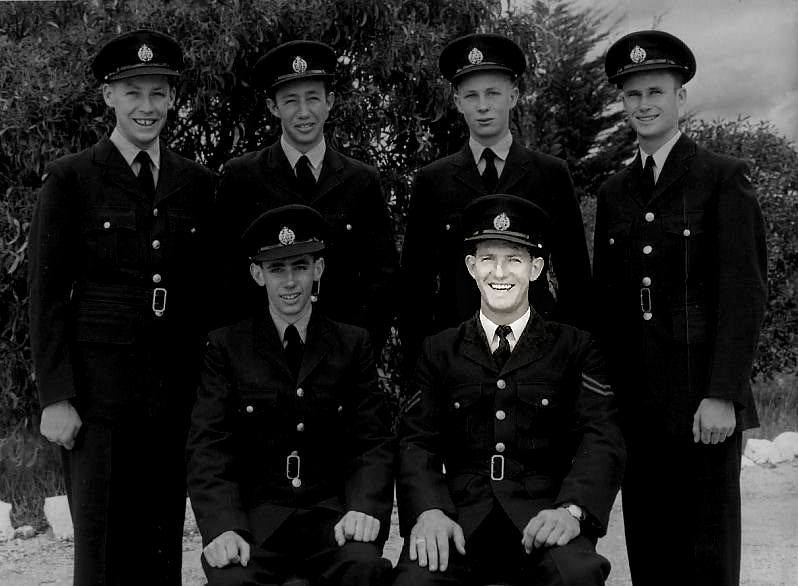
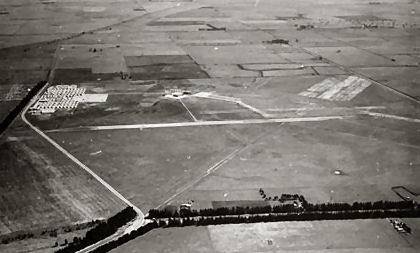
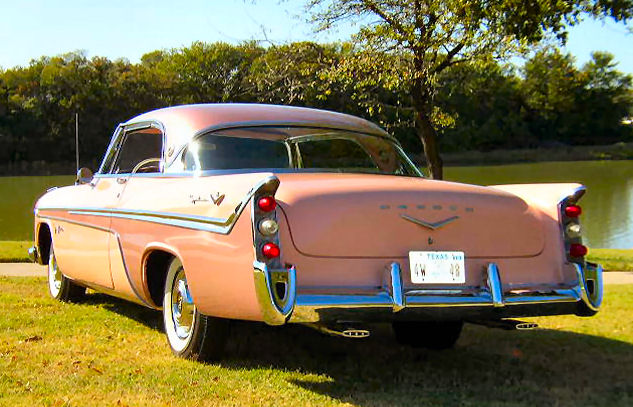
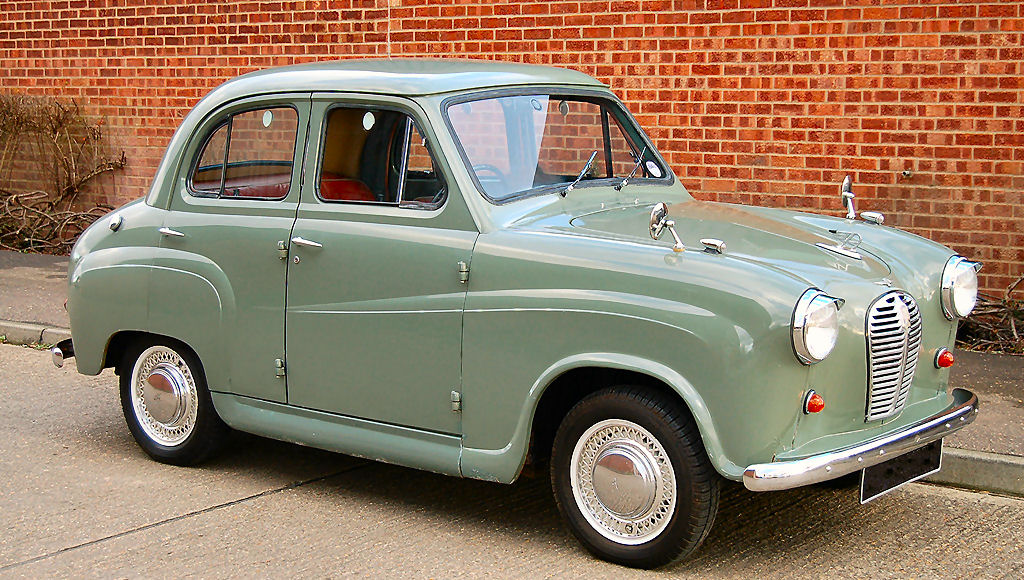

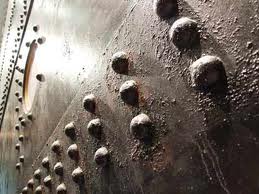
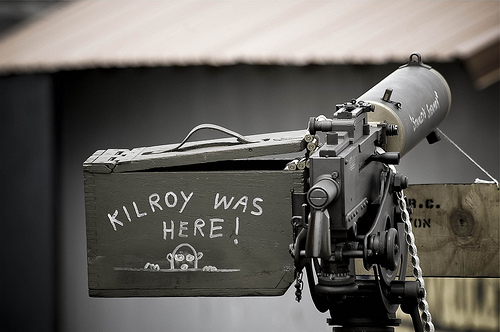 Super-GI who had always "already been" wherever GIs went. It became
a challenge to place the logo in the most unlikely places
imaginable (it is said to be atop Mt. Everest, the Statue of
Liberty, the underside of the Arc De Triomphe and even scrawled in
the dust on the moon.
Super-GI who had always "already been" wherever GIs went. It became
a challenge to place the logo in the most unlikely places
imaginable (it is said to be atop Mt. Everest, the Statue of
Liberty, the underside of the Arc De Triomphe and even scrawled in
the dust on the moon.